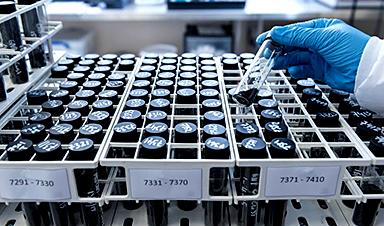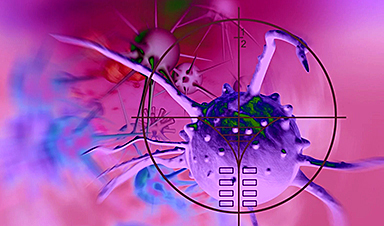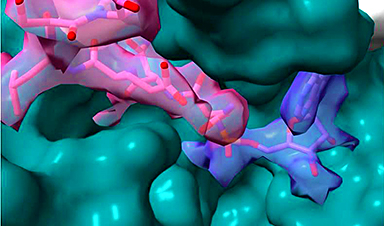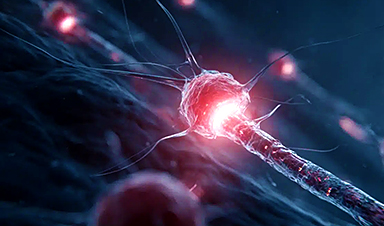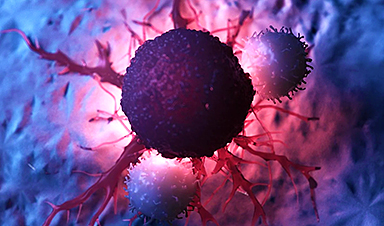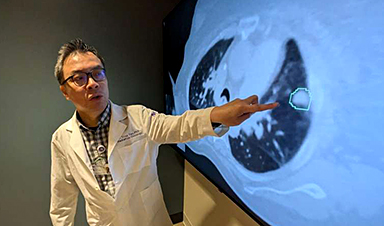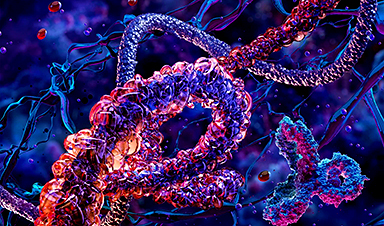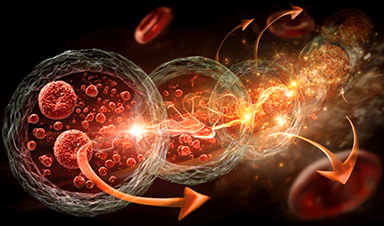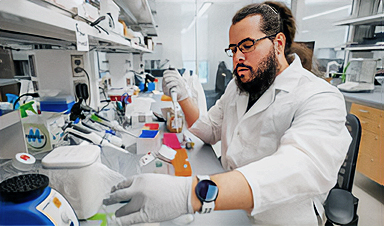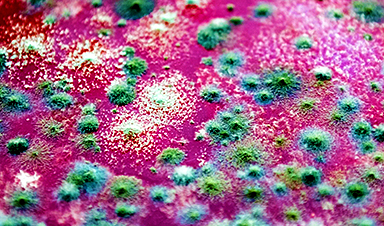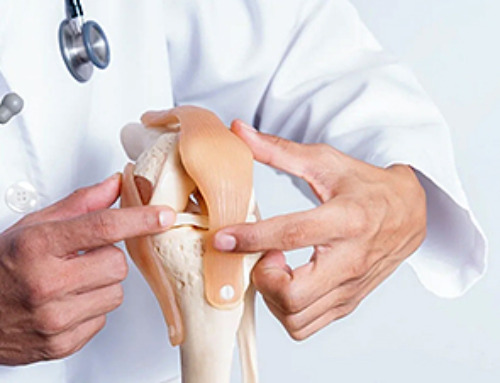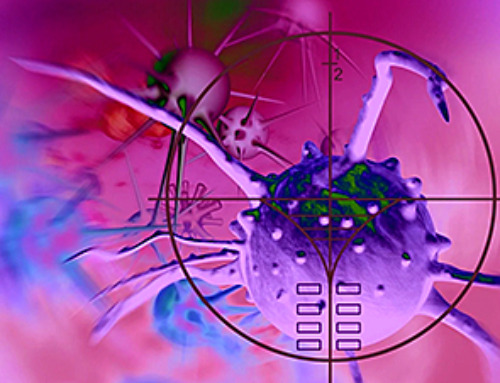As a COVID-19 and medical device researcher, I understand the importance of face masks to prevent the spread of the coronavirus. So I am intrigued that some mask manufacturers have begun adding graphene coatings to their face masks to inactivate the virus. Many viruses, fungi and bacteria are incapacitated by graphene in laboratory studies, including feline coronavirus.
How does graphene damage viruses, bacteria and human cells?
Graphene is a thin but strong and conductive two-dimensional sheet of carbon atoms. There are three ways that it can help prevent the spread of microbes:
– Microscopic graphene particles have sharp edges that mechanically damage viruses and cells as they pass by them.
– Graphene is negatively charged with highly mobile electrons that electrostaticly trap and inactivate some viruses and cells.
– Graphene causes cells to generate oxygen free radicals that can damage them and impairs their cellular metabolism.
Why graphene may be linked to lung injury
Researchers have been studying the potential negative impacts of inhaling microscopic graphene on mammals. In one 2016 experiment, mice with graphene placed in their lungs experienced localized lung tissue damage, inflammation, formation of granulomas (where the body tries to wall off the graphene), and persistent lung injury, similar to what occurs when humans inhale asbestos. A different study from 2013 found that when human cells were bound to graphene, the cells were damaged.
In order to mimic human lungs, scientists have developed biological models designed to simulate the impact of high concentration aerosolized graphene – graphene in the form of a fine spray or suspension in air – on industrial workers. One such study published in March 2020 found that a lifetime of industrial exposure to graphene induced inflammation and weakened the simulated lungs’ protective barrier.
It’s important to note that these models are not perfect options for studying the dramatically lower levels of graphene inhaled from a face mask, but researchers have used them in the past to learn more about these sorts of exposures. A study from 2016 found that a small portion of aerosolized graphene nanoparticles could move down a simulated mouth and nose passages and penetrate into the lungs. A 2018 study found that brief exposure to a lower amount of aerosolized graphene did not notably damage lung cells in a model.
From my perspective as a researcher, this trio of findings suggest that a little bit of graphene in the lungs is likely OK, but a lot is dangerous.
Although it might seem obvious to compare inhaling graphene to the well-known harms of breathing in asbestos, the two substances behave differently in one key way. The body’s natural system for disposing of foreign particles cannot remove asbestos, which is why long-term exposure to asbestos can lead to the cancer mesothelioma. But in studies using mouse models to measure the impact of high dose lung exposure to graphene, the body’s natural disposal system does remove the graphene, although it occurs very slowly over 30 to 90 days.
The findings of these studies shed light on the possible health impacts of breathing in microscopic graphene in either small or large doses. However, these models don’t reflect the full complexity of human experiences. So the strength of the evidence about either the benefit of wearing a graphene mask, or the harm of inhaling microscopic graphene as a result of wearing it, is very weak.
Image Credit: NBIC
Post by Amanda Scott, NA CEO. Follow her on twitter @tantriclens
Thanks to Heinz V. Hoenen. Follow him on twitter: @HeinzVHoenen
News
Repurposed drugs could calm the immune system’s response to nanomedicine
An international study led by researchers at the University of Colorado Anschutz Medical Campus has identified a promising strategy to enhance the safety of nanomedicines, advanced therapies often used in cancer and vaccine treatments, [...]
Nano-Enhanced Hydrogel Strategies for Cartilage Repair
A recent article in Engineering describes the development of a protein-based nanocomposite hydrogel designed to deliver two therapeutic agents—dexamethasone (Dex) and kartogenin (KGN)—to support cartilage repair. The hydrogel is engineered to modulate immune responses and promote [...]
New Cancer Drug Blocks Tumors Without Debilitating Side Effects
A new drug targets RAS-PI3Kα pathways without harmful side effects. It was developed using high-performance computing and AI. A new cancer drug candidate, developed through a collaboration between Lawrence Livermore National Laboratory (LLNL), BridgeBio Oncology [...]
Scientists Are Pretty Close to Replicating the First Thing That Ever Lived
For 400 million years, a leading hypothesis claims, Earth was an “RNA World,” meaning that life must’ve first replicated from RNA before the arrival of proteins and DNA. Unfortunately, scientists have failed to find [...]
Why ‘Peniaphobia’ Is Exploding Among Young People (And Why We Should Be Concerned)
An insidious illness is taking hold among a growing proportion of young people. Little known to the general public, peniaphobia—the fear of becoming poor—is gaining ground among teens and young adults. Discover the causes [...]
Team finds flawed data in recent study relevant to coronavirus antiviral development
The COVID pandemic illustrated how urgently we need antiviral medications capable of treating coronavirus infections. To aid this effort, researchers quickly homed in on part of SARS-CoV-2's molecular structure known as the NiRAN domain—an [...]
Drug-Coated Neural Implants Reduce Immune Rejection
Summary: A new study shows that coating neural prosthetic implants with the anti-inflammatory drug dexamethasone helps reduce the body’s immune response and scar tissue formation. This strategy enhances the long-term performance and stability of electrodes [...]
Scientists discover cancer-fighting bacteria that ‘soak up’ forever chemicals in the body
A family of healthy bacteria may help 'soak up' toxic forever chemicals in the body, warding off their cancerous effects. Forever chemicals, also known as PFAS (per- and polyfluoroalkyl substances), are toxic chemicals that [...]
Johns Hopkins Researchers Uncover a New Way To Kill Cancer Cells
A new study reveals that blocking ribosomal RNA production rewires cancer cell behavior and could help treat genetically unstable tumors. Researchers at the Johns Hopkins Kimmel Cancer Center and the Department of Radiation Oncology and Molecular [...]
AI matches doctors in mapping lung tumors for radiation therapy
In radiation therapy, precision can save lives. Oncologists must carefully map the size and location of a tumor before delivering high-dose radiation to destroy cancer cells while sparing healthy tissue. But this process, called [...]
Scientists Finally “See” Key Protein That Controls Inflammation
Researchers used advanced microscopy to uncover important protein structures. For the first time, two important protein structures in the human body are being visualized, thanks in part to cutting-edge technology at the University of [...]
AI tool detects 9 types of dementia from a single brain scan
Mayo Clinic researchers have developed a new artificial intelligence (AI) tool that helps clinicians identify brain activity patterns linked to nine types of dementia, including Alzheimer's disease, using a single, widely available scan—a transformative [...]
Is plastic packaging putting more than just food on your plate?
New research reveals that common food packaging and utensils can shed microscopic plastics into our food, prompting urgent calls for stricter testing and updated regulations to protect public health. Beyond microplastics: The analysis intentionally [...]
Aging Spreads Through the Bloodstream
Summary: New research reveals that aging isn’t just a local cellular process—it can spread throughout the body via the bloodstream. A redox-sensitive protein called ReHMGB1, secreted by senescent cells, was found to trigger aging features [...]
AI and nanomedicine find rare biomarkers for prostrate cancer and atherosclerosis
Imagine a stadium packed with 75,000 fans, all wearing green and white jerseys—except one person in a solid green shirt. Finding that person would be tough. That's how hard it is for scientists to [...]
Are Pesticides Breeding the Next Pandemic? Experts Warn of Fungal Superbugs
Fungicides used in agriculture have been linked to an increase in resistance to antifungal drugs in both humans and animals. Fungal infections are on the rise, and two UC Davis infectious disease experts, Dr. George Thompson [...]
